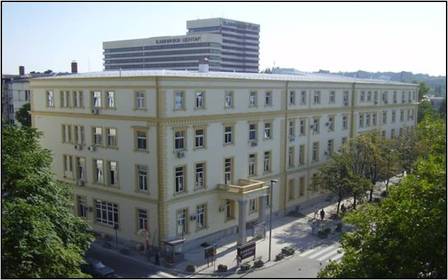
By Igor Koncar
Most European surgeons would probably find hands-on patient training impossible in Serbia as an Eastern European country with political and economical issues. But is it really?
Serbia is a southeastern European country with 7 million inhabitants and a rich history. Investment is the present and future of this country, with a healthcare system renovation as part of it. During the recent period of crisis the hospital system has not fragmented and vascular care has remained centralised. The Clinic for Vascular and Endovascular Surgery of the Serbian Clinical Centre is one of the two biggest vascular centres in Serbia and the only one routinely performing thoracoabdominal aneurysm repair and covering emergency vascular pathology all year round. This hospital has been the cradle of cardiovascular medicine even in the former Yugoslavia, being the place where carotid endarterectomy was performed for the first time in 1966. Nowadays, our team is performing almost 700 carotid procedures annually, among 2,000 different vascular procedures from head to the foot, with a long experience in open surgery and education of vascular specialists from Serbia and other countries. In 2005 cervical plexus block in carotid surgery was introduced and has since been performed more than 3,000 times. Prof Dr Lazar Davidovic, the head of the clinic, has used this rich turn-over of patients to initiate the hands on training course in eversion carotid endarterectomy under cervical plexus block anaesthesia. The European Society for Vascular Surgery promoted this course on its website.
In early September 2011, six surgeons and one anaesthesiologist from Ireland, Italy, Egypt, Romania and Cyprus participated in this course. They were chosen on a “first come first served basis” among fifteen practitioners who applied for this course. During one week participants had theoretical afternoon sessions, with lectures dedicated to different problems in carotid surgery, and video lectures, while the morning was filled with hands on sessions, when they split in small groups of two, each one participating in two carotid procedures per day. All participants were already experienced in carotid surgery, but had never performed the eversion technique, and never operated under cervical plexus block. Experienced surgeons and tutors mentored the participants, sharing their tips and tricks during procedures, and as the days were passing participants performed some parts of the procedures on their own under supervision. Eventually all of them performed at least one procedure skin to skin, including the eversion technique. One of the participants, Dr Vassilis Hadjianastassiou from Cyprus, who participated in the course with his anaesthetic colleague, was very impressed about the course: “The spirit of team work promoted by the head of the unit and course director Prof Davidovich, between the vascular surgeons, nurses and anaesthetists is the best I have encountered, having been to many workshops and training courses in the last twenty years. Although being unique, hands on patients courses like this, are appropriate for experienced vascular surgeons as a tool for Continuous Professional Development”.
The course director, the Head of this Clinic, Davidovic, agrees: “Every team needs a team spirit, especially the team of a high volume centre like we are. This is a good opportunity for other young vascular surgeons to visit us and benefit from the high volume of different open vascular procedures we are dealing with, every day. We are not able to organize this kind of course more than once a year, however our doors are always open and we will always be happy for another experience exchange.”
It is quite clear that the surgical educational modes for this century are models and simulators, however being part of an experienced team for even a short period of our professional life could be a valuable addition in our continuous professional development.
Igor Koncar is the course secretary.













